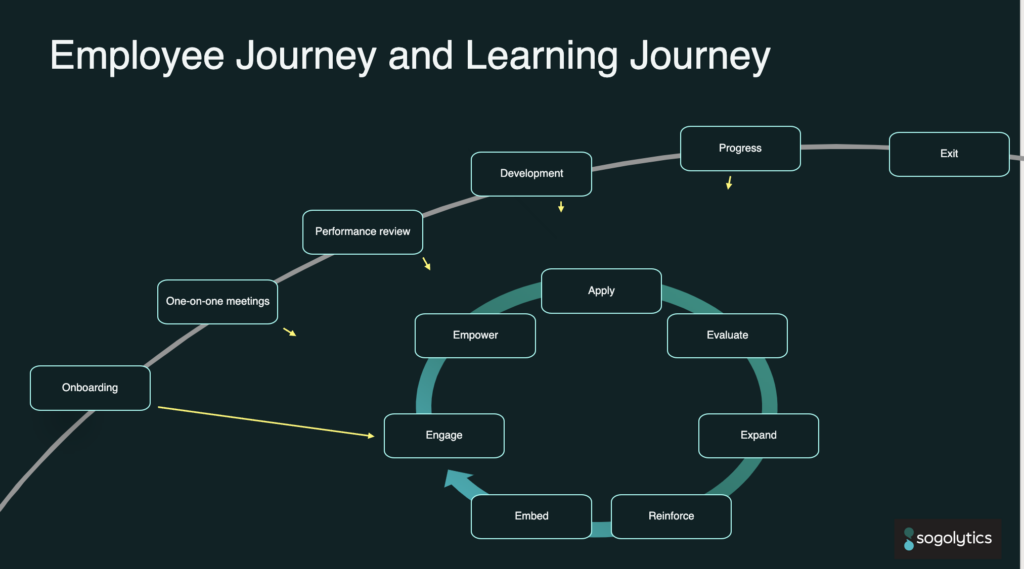Learning and development (L&D) is one of the key drivers of employee satisfaction and engagement today. As more Millennials and now Gen Z enter the workplace, the focus is shifting from competitive compensation to growth opportunities.
Having a data-driven L&D strategy is an effective way to deploy targeted learning that is in sync with employee expectations and will not only address organizational skill gaps but have a positive impact on employee retention and the employer’s brand.

3 types of data for a true data-driven learning and development program
- Skill levels and skill gap data: It’s important to synchronize skill levels (and bridge skill gaps) with business objectives. By identifying which skills employees need to develop to stay relevant to the business objectives, organizations can build an appropriate L&D program to close this skill gap. Here are the three types of data you need to collect to ensure you are on top of your game:
- Participation data: This refers to data that measures employee participation and engagement with your organization’s learning programs. These data points could include both the quantitative traction each learning opportunity garners and the qualitative sentiment around it. Understanding these aspects will help you develop more impactful learning opportunities going forward.
- Voice of employee data: This kind of data is essential to driving the L&D strategy and shaping the learning culture within your organization. Employees will be more willing to share their feedback if they feel like their voice is being heard. You can ensure this is the case by proactively reaching out and also ensuring that suggestions and feedback are acted upon. When employees notice that they have a say in the learning process, they will be much more engaged and feel a sense of ownership in developing and applying their new skills.
Such data-driven learning and development strategies are most effective when your organization’s culture is conducive to honest feedback. To ensure this is the case, HR leaders need to establish an open dialogue with both, the leadership team and the employees, to discuss the current scenario as well as the learning goals and objectives to ensure that everyone is on the same page.
Learning throughout the employee journey
Learning shouldn’t just be seen as the first step in joining an organization, but instead as a part of a continual journey for betterment and growth. That’s why it’s important to implement plans and processes to encourage learning for employees as soon as they join your organization and throughout their time with you.

Onboarding is a great opportunity to engage with new employees.
During this time, you can work on identifying your new employees’ strengths and potential weaknesses, get to know their aspirations, learn about their individual development goals, and enquire about their learning styles. This data will help you provide curated learning resources that will empower your employees to better contribute to your organization while also arming them to achieve their career goals.
Teaching the right skills at the right time can improve productivity and efficiency as your employees are able to apply these on the job, better contributing to the tasks at hand. But it’s not enough just to teach. Timely assessments and check-ins help evaluate progress, giving you valuable insight into the effectiveness of your L&D strategy.
As your employees achieve learning milestones, work with them to plan the next steps. Help them expand their knowledge by developing new learning opportunities that support their aspirations and the demands of their job. If employees are looking to transfer into a new role, help them develop (and master) the skills required for this transition.
Soft skills in particular are always in high demand. Work to continually reinforce these skills through fresh resources and proactively acknowledge the employees who demonstrate these in action.
At the end, your goal is to nurture a culture of learning.
Are you learning from (and about!) your L&D program?
Beyond understanding individual opinions, surveys can also give you a bird’s eye perspective of the prevailing sentiments across your organization.
Not sure how to go about it? Sogolytics can guide you in creating powerful surveys that meet your objectives. Simply get in touch with our team to get started!
As you think about the questions to ask your employees, here are a few examples:
- What opportunities for learning would you like to see?
- What skills would you like to learn or improve?
- How will this help you in your role?
- How will it help you to progress personally?
- Is there any help you need in your role that is not currently supported by our L&D plan?
When it comes to building an effective learning and development program, there’s always more to learn. Unfortunately, too many organizations think that they’ve got it covered. This often leads to them wasting resources by training the wrong people on the wrong skills at the wrong time.
Don’t let this happen to you! Join our free webinar, L&D Strategies Gone Wrong: Delivering Better Training in 2023, in which we will rethink L&D strategies and how doing so can positively impact talent retention and other business goals.






